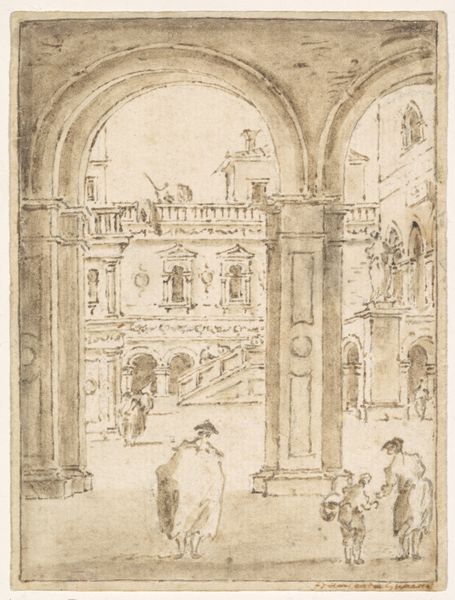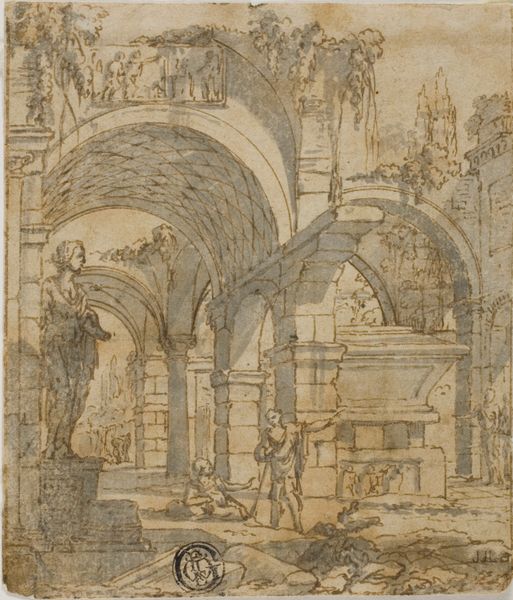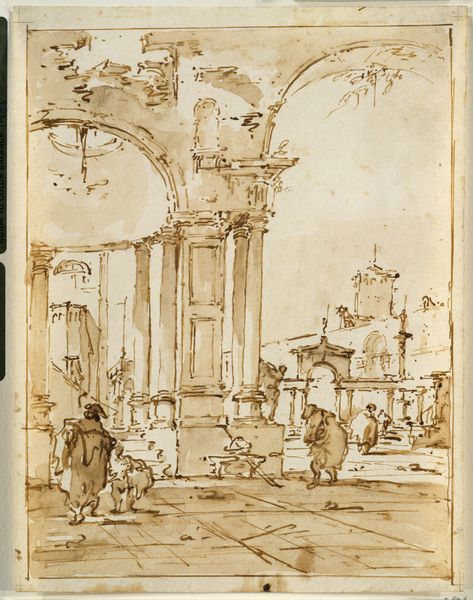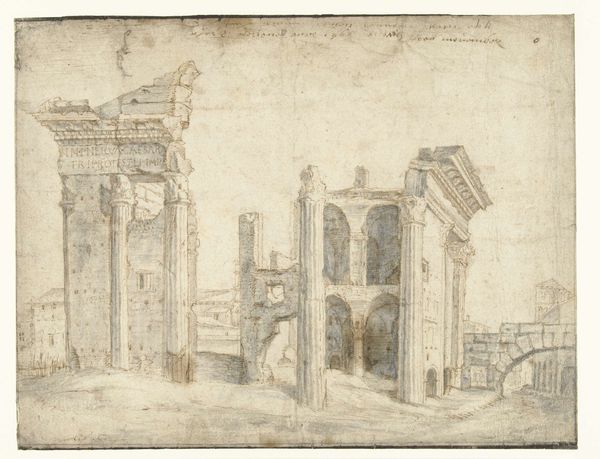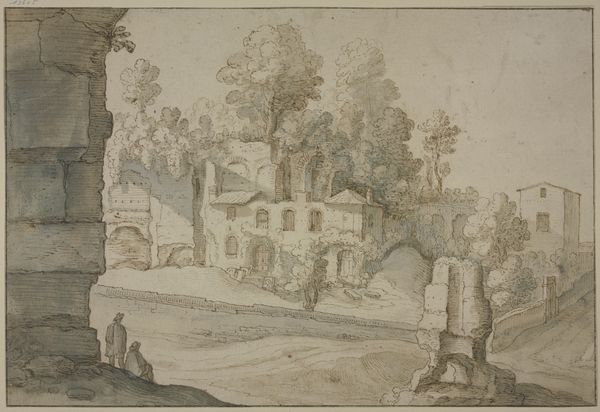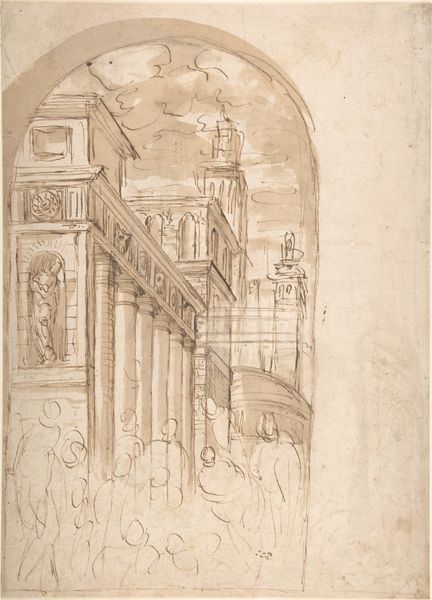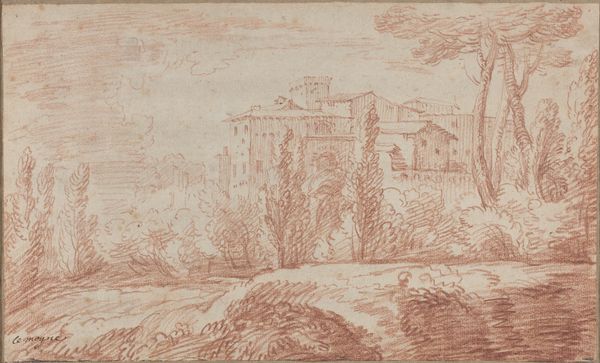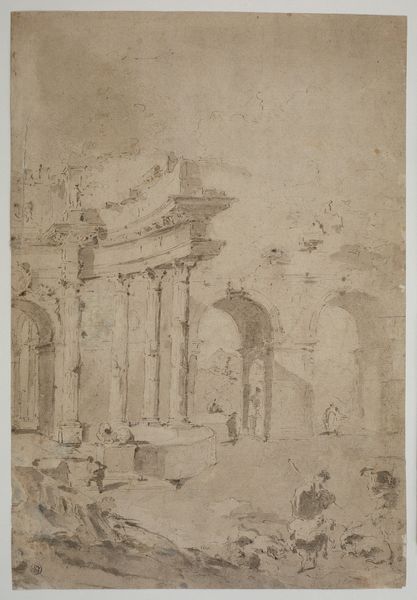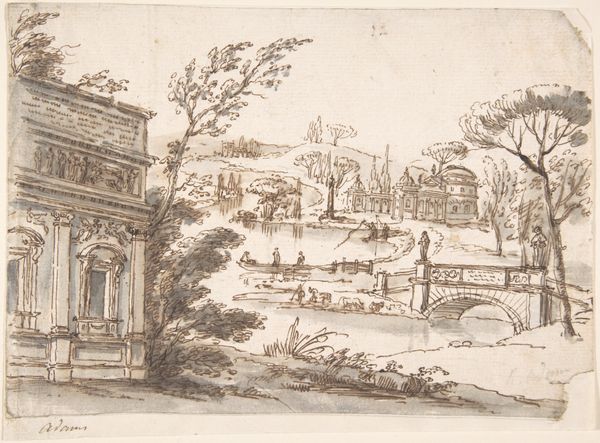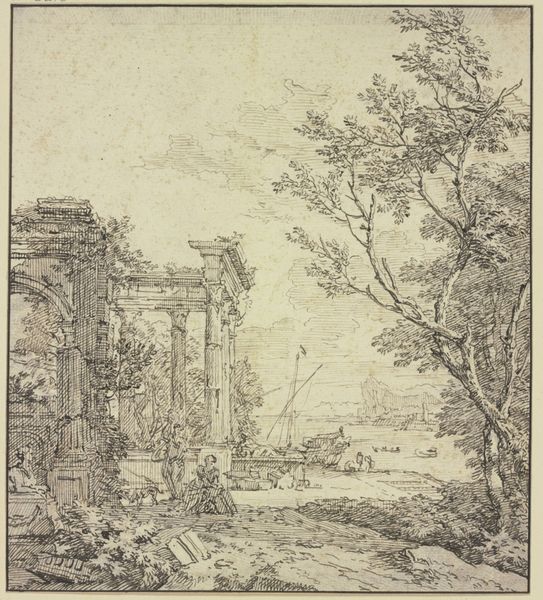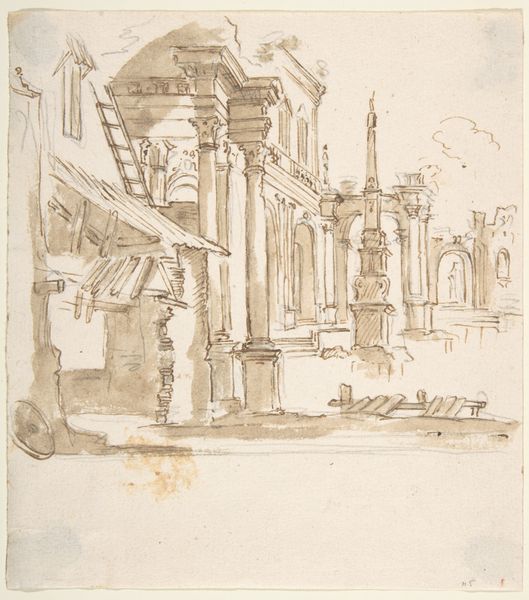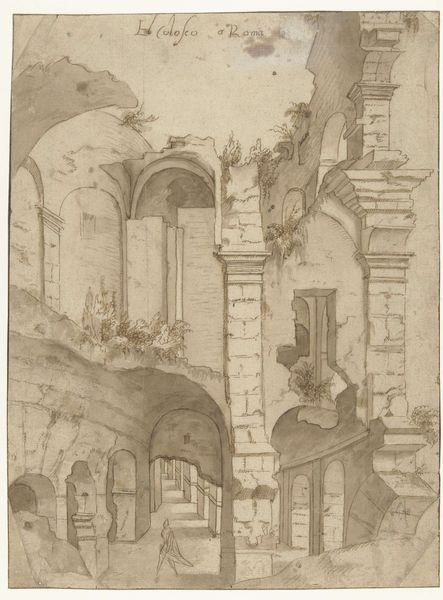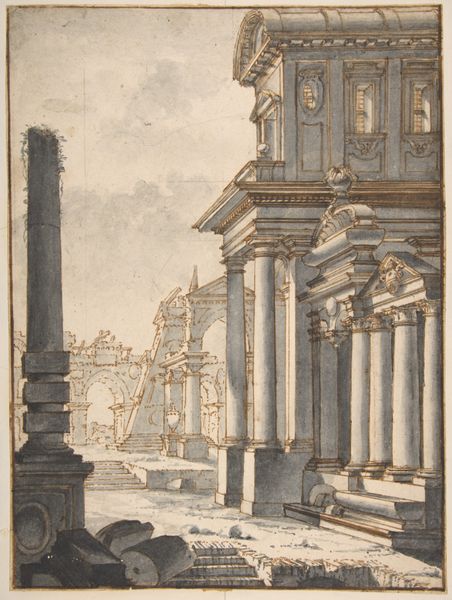
drawing, ink, pencil, architecture
#
architectural sketch
#
drawing
#
baroque
#
pencil sketch
#
landscape
#
ink
#
coloured pencil
#
pencil
#
academic-art
#
italian-renaissance
#
watercolor
#
architecture
Dimensions: Overall: 18.6 x 13.3 cm (7 5/16 x 5 1/4 in.) support: 23.9 x 18 cm (9 7/16 x 7 1/16 in.)
Copyright: National Gallery of Art: CC0 1.0
Editor: This is Claude Lorrain's "Villa di Papa Giulio," a drawing from around 1635 using pencil, ink, and watercolor. The rendering is beautiful, but I'm struck by how different the stone feels compared to the soft foliage in the background. How do you interpret this work? Curator: This piece, viewed through a materialist lens, reveals a fascinating intersection of labor and status. Consider the materials: ink, pencil, watercolor on paper. Relatively accessible, yet used to depict the Villa, a symbol of papal power and wealth, constructed, of course, using far more expensive materials extracted and crafted by armies of labourers. Editor: So you’re saying the materials themselves tell a story of inequality? Curator: Precisely. The drawing itself becomes a commodity, a representation of power circulated among a different class – perhaps aspiring artists, wealthy patrons, or even tourists. Look at the detail versus the broader sketch - there are social implications related to both labor and ownership embedded here. It almost documents the transformation of resources and toil into status. How do you see the implications of it being a drawing instead of the actual villa it depicts? Editor: I see what you mean, it definitely democratizes access to it. Someone who couldn’t travel to or enter the Villa Giulio could own this representation. The means of image production impacts who can "possess" it. Curator: Exactly. And consider the labour involved in its creation. Lorrain wasn’t just capturing an image, he was participating in a system where skill, materials, and representation intersected. The drawing becomes a microcosm of the socio-economic forces at play. Editor: It's amazing to think about how the seemingly simple act of drawing can reveal so much about the complex systems of production and power in 17th-century Rome. Thank you, I have a different appreciation of Lorrain's process now! Curator: Likewise. It shows the importance of understanding the tangible elements behind even the most ethereal artistic visions.
Comments
No comments
Be the first to comment and join the conversation on the ultimate creative platform.
